Calvin Johnson, Charles Woodson lead Pro Football Hall of Fame Class of 2021
Sunday's Pro Football Hall of Fame induction ceremony in Canton, Ohio, will feature a pair of players near and dear to many Michiganders.
On offense, former wide receiver Calvin Johnson will become the 22nd Detroit Lion enshrined in the Hall. On defense, ex-Wolverine Charles Woodson will be the 36th defensive back enshrined. The induction ceremony will air on
Six other NFL legends also made the cut this year, including a familiar tormentor of the Lions under center and a hard-hitting safety who also spent some time in the NFC Central against the Lions. Here's a quick look at the Class of 2021.
INSIDE THE PROCESS: How I built Calvin Johnson's presentation
MUST-WATCH MEGATRON: The moment Calvin Johnson learned he was elected to Pro Football Hall of Fame
OL Alan Faneca
The teams: Steelers (1998-2007), Jets (2008-09), Cardinals (2010).
The honors: Six-time All-Pro, nine Pro Bowls, Hall of Fame All-2000s Team.
The player: If "the best ability is availability," then Faneca is definitelyan all-time great. The 26th overall pick in 1998 out of LSU missed just one game over his 13-year career. During that time, Faneca established himself as a key cog in the Steelers’ rushing attack, including his start for Pittsburgh in the Super Bowl at Ford Field in 2006. Faneca is already a member of the Steelers’ All-Time team. Another sign of excellence: He helped the lowly Jets reach the 2009 AFC title game.
WR Calvin Johnson
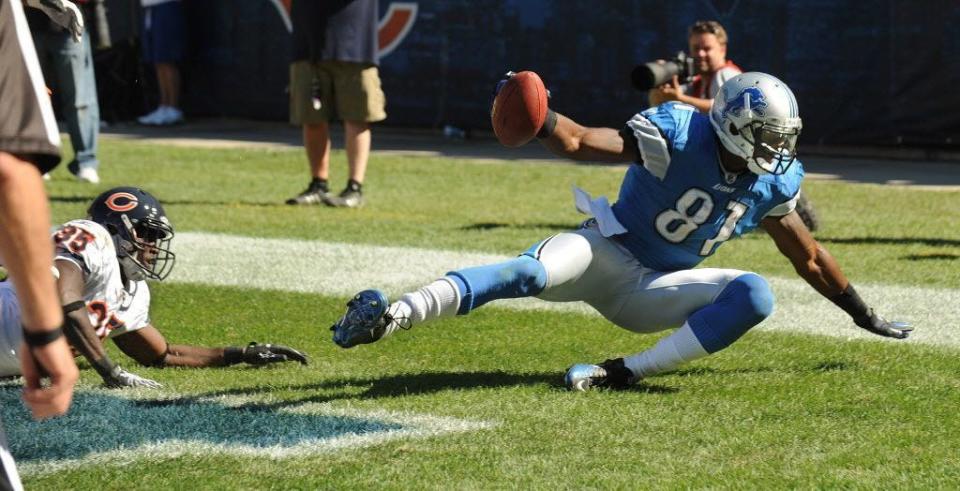
The team: Lions (2007-15).
The honors: Three-time All-Pro, six Pro Bowls, HOF All-2010s Team.
The career: Lions fans were holding their breath when the team picked Johnson No. 2 overall in 2007 — the franchise's third WR pick in four years. But Johnson proved worth the risk. "Megatron" — his nickname for his machine-like approach on the field — is the Lions’ franchise leader in catches (731), yards receiving (11,619) and touchdown receptions (83). Becoming a first-ballot Hall of Famer after just nine seasons speaks to how feared he was, as does his NFL single-season record for receiving yards (1,964 in 2012).
S John Lynch
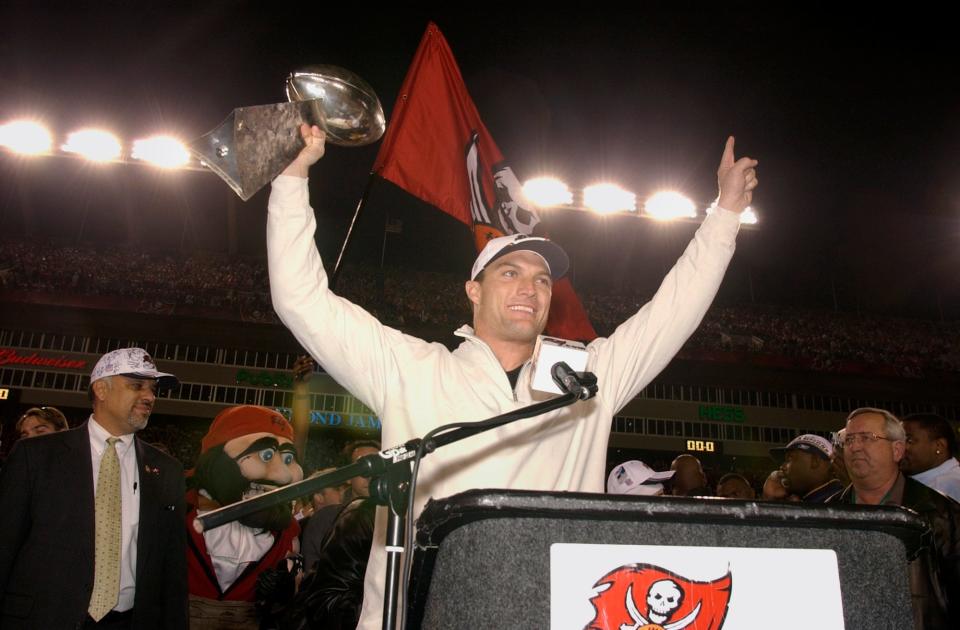
The teams: Buccaneers (1993-2003), Broncos (2004-07).
The honors: Two-time All-Pro, nine Pro Bowls.
The career: There’s something about those two-sport stars out of Stanford named John. After trying his hand at pro baseball, Lynch was nabbed at No. 82 overall in 1993. His career took off, though, when Jackson's Tony Dungy became coach of the otherwise woebegone Bucs. Lynch became the hard-hitting anchor of the innovative Tampa 2 defense, along with now-fellow Hall of Famers Warren Sapp and Derrick Brooks. Those three helped the Bucs get over the hump and win the Super Bowl in the 2002 season. And just like Stanford's otherJohn — Elway — Lynch ended his career in Denver and then moved into the front office to engineer a Super Bowl berth. Then again, unlike Elway, Lynch never scored a TD. Guess he was too busy preventing them.
QB Peyton Manning
The teams: Colts (1998-2011), Broncos (2012-15).
The honors: Five-time MVP (2003, 2004, 2008, 2009, 2013), Super Bowl 41 MVP, seven-time All-Pro, 14 Pro Bowls, HOF All-2000s Team.
The career: Few players entered the NFL with more hype than Manning, the son of former NFL QB Archie Manning. The No. 1 overall pick in 1998 started every game as a rookie and led the league in interceptions. From then on, though, he set the standard at quarterback. Known for his cerebral approach and ability to audible, Manning threw for at least 4,000 yards in 14 seasons and retired as the NFL’s all-time leader in passing yards, touchdowns and MVP awards. He still holds the single-season record with 5,477 passing yards, set in 2013 with the Broncos. Manning, who just missed a title at Tennessee, eventually shook the “bridesmaid” tag, cashing in with Super Bowl titles in Indy and Denver.
WR Drew Pearson
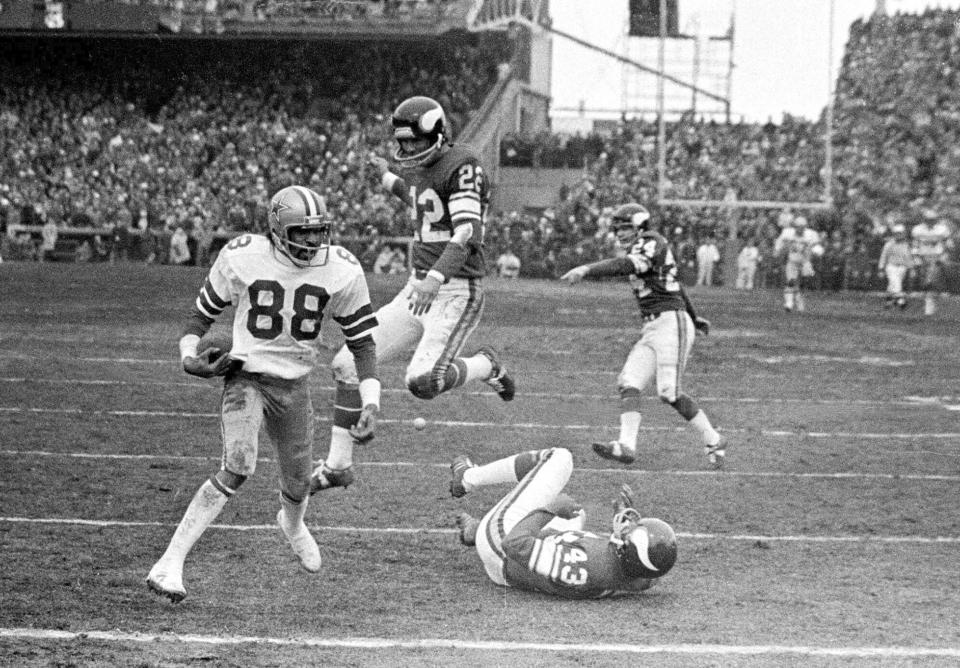
The teams: Cowboys (1973-83).
The honors: Three-time All-Pro, three Pro Bowls, HOF All-1970s Team.
The career: Pearson’s run to the Hall of Fame began as an undrafted free agent out of Tulsa. He soon emerged as the top receiving target for "America’s Team." Pearson retired as the Cowboys’ all-time leader in receptions (489) and receiving yards (7,822) and helped Dallas reach three Super Bowls (with a win in the 1977 season, the year he led the NFL in receiving yards with 870).
DB Charles Woodson
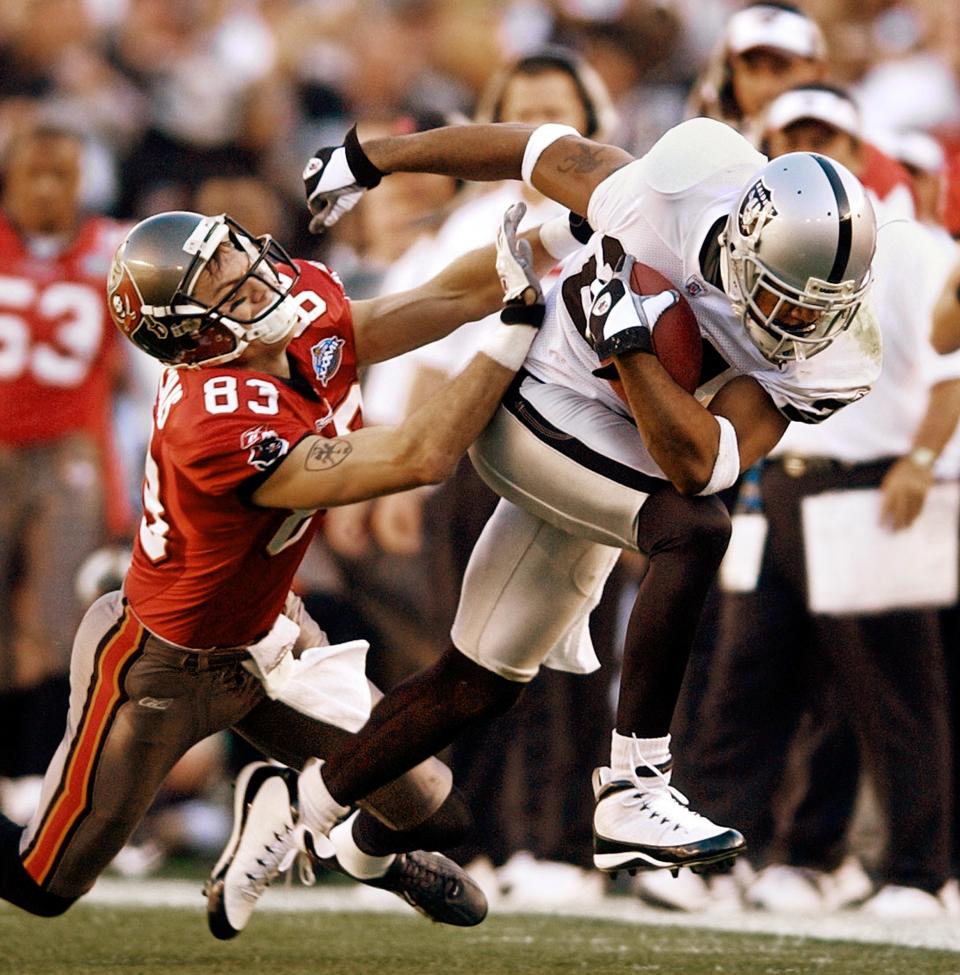
The teams: Raiders (1998-2005, 2013-15), Packers (2006-12).
The honors: 1998 Defensive Rookie of the Year, 2009 Defensive Player of the Year, four-time All-Pro, nine Pro Bowls, HOF All-2000s Team.
The career: Not every Heisman winner sees NFL success. But this Wolverine — the first defense-only player named as the top college player — was an elite pro for his entire career. A Pro Bowler, in both his first and his final season, Woodson’s nose for the football made him a threat to score at all times: He recorded 65 interceptions (fifth-most in league history), forced 33 fumbles (with 18 recoveries), is tied for the most career defensive TDs (13) and was the first player with 50 interceptions and 20 sacks. He played in a pair of Super Bowls, too, starring for Oakland in its 2002 run and helping Green Bay win it all in the 2010 season.
Coach Tom Flores
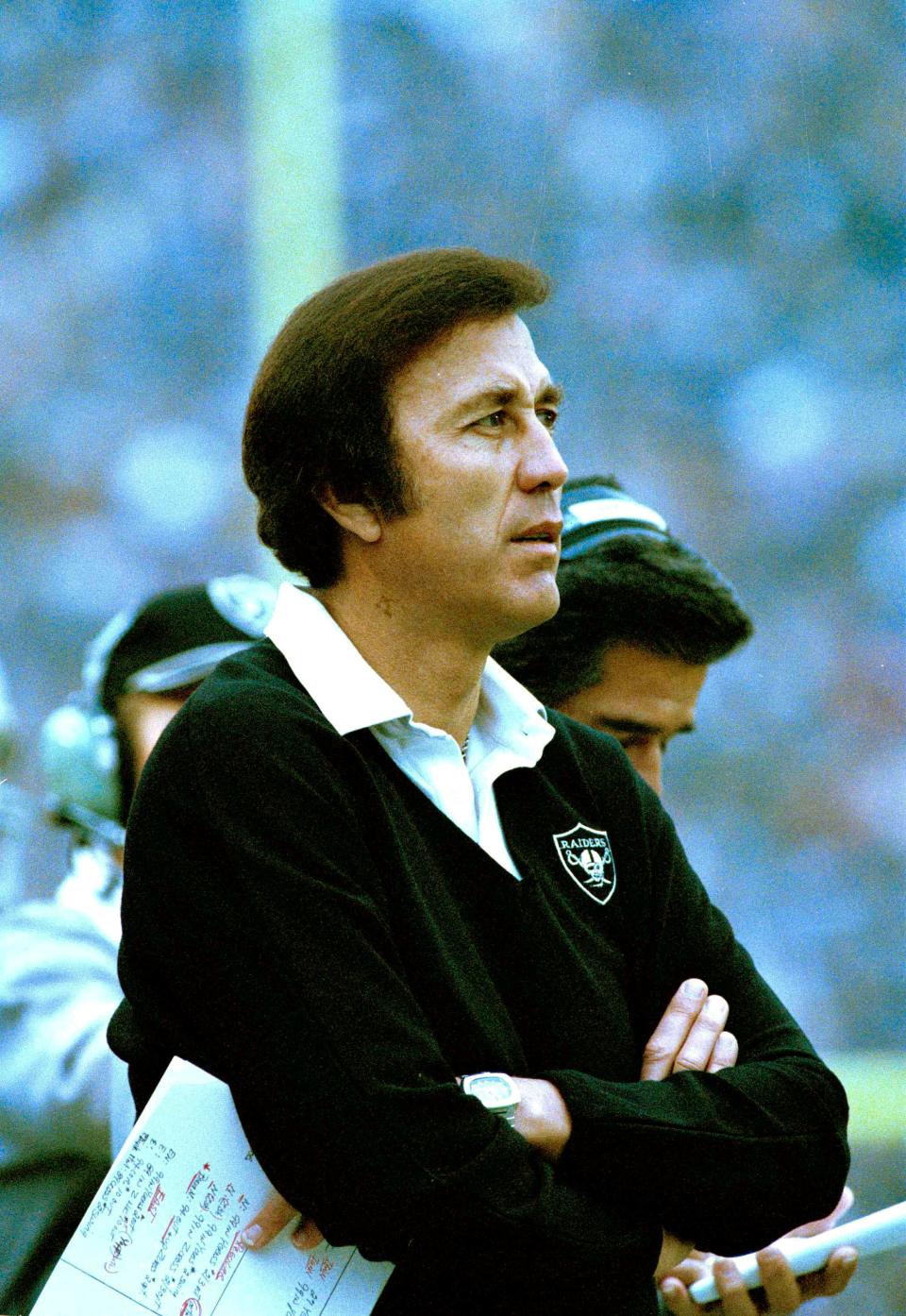
The teams: Raiders (1979-87), Seahawks (1992-94).
The honors: 1982 AFC Coach of the Year.
The career: The former QB didn’t stray from his AFL roots when he got into coaching. After coaching Buffalo's QBs, Flores served as wide receivers coach for seven years in Oakland before owner Al Davis made him the first minority head coach (replacing the retiring John Madden) in NFL history. In just his second season, Flores' Raiders became the first wild-card team to win a Super Bowl. He returned the Raiders to the mountaintop three years later with a convincing win in Super Bowl 18. Five of his first six seasons at the helm included playoff appearances, and his .727 career postseason winning percentage is sixth all-time.
Contributor Bill Nunn
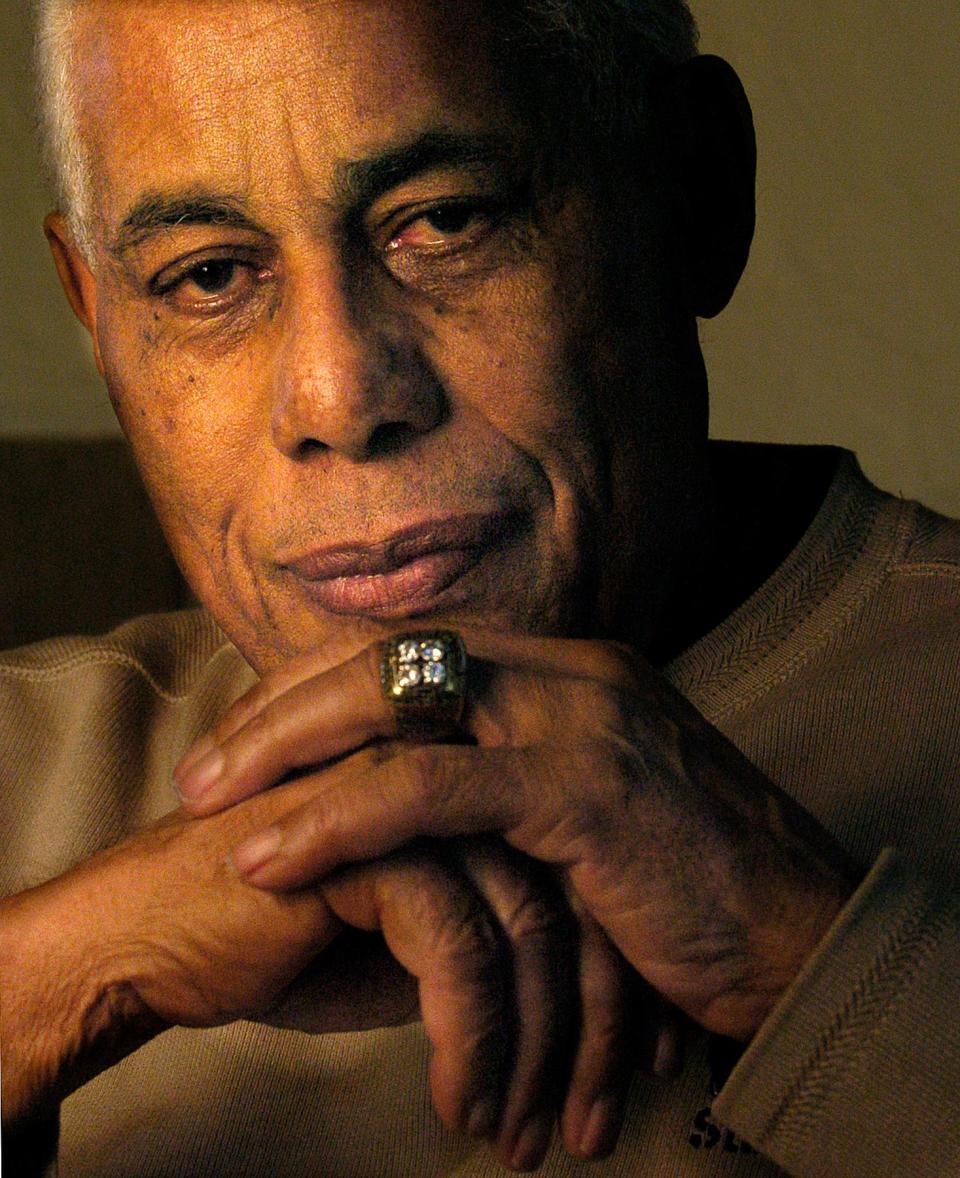
The teams: Steelers (1968-2014).
The career: The Steelers plucked Nunn from the Pittsburgh Courier, where he was a writer and editor, to join their scouting department. All he did from there was build the most renowned dynasty in NFL history, as Pittsburgh won four Super Bowls in six seasons (1974-79). Nunn’s knowledge and relationships with Historically Black Colleges and Universities led to the Steelers drafting eventual Hall of Famers John Stallworth, Mel Blount and Donnie Shell. In his 47 seasons with the team, the Steelers reached six Super Bowls in all.
This article originally appeared on Detroit Free Press: Pro Football Hall of Fame 2021 class: Calvin Johnson, Charles Woodson

